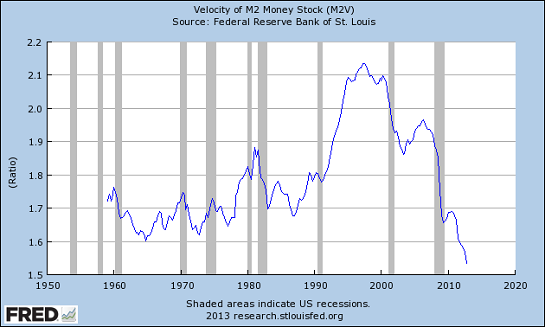You might think that The Federal Reserve's policy of making credit cheap and abundant would goose people to consume and invest more money. Alas, the velocity of money is hitting historic lows: the Fed may be creating credit but people and enterprises aren't putting that money into circulation.

It's called diminishing returns: every dollar of debt creates interest payments, but it's no longer doing households or enterprises any good.
by Charles Hugh-Smith of OfTwoMinds blog
Definition of 'Velocity Of Money'The rate |
Investopedia explains 'Velocity Of Money'Velocity is important for measuring the rate at which money in circulation is used for purchasing goods and services. This helps investors gauge how robust the economy is, and is a key input in the determination of an economy's inflation calculation. Economies that exhibit a higher velocity of money relative to others tend to be further along in the business |
No comments:
Post a Comment